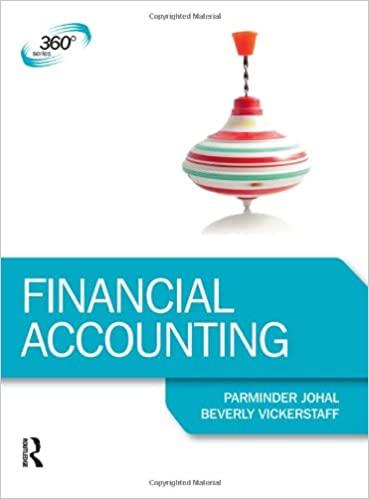







If a company decides to take a specific course of action and this action causes the company to incur additional costs, these additional costs are called: 1 Multiple Choice O Period costs. Pocket costs. O O Discount costs O Incremental costs. Sunk costs. A company is considering a new project that will cost $19,000. This project will result in additional annual revenues of $6,000 for the next 5 years. The $19,000 cost is an example of a(n): 2 Multiple Choice Sunk cost. Fixed cost. O Incremental cost. O O Uncontrollable cost. O Opportunity cost. Managerial decision-making is a process that follows the following steps: 3 A. Select the preferred alternative. B. Collect relevant information. C. Analyze and assess decisions made. D. Identify alternative courses of action. E. Define the decision task. In what order are these steps performed? Multiple Choice A>B> C>D>E. C>D>A>E>B. E>D>B>A>C. D> B>E>BA. B>A>E>C>D. 4 In managerial decision-making, a company must collect relevant information to use in the evaluation process. Some of this information may relate to non-financial issues. All the following relate to non-financial information, except for: Multiple Choice O Environmental effects. Potential sales. Competition with a customer. Compliance with the law. O Availability of credit. In managerial decision-making, a company should analyze and assess decisions made at a later date. What is the major reason for performing such a review? 5 Multiple Choice O To cover-up any poorly made decisions. To determine anyone should be fired. O To hold relevant employees involved accountable. O To improve the decision-making process in the future. To comply with generally accepted accounting principles. A cost that cannot be avoided or changed because i arises from a past decision, and is irrelevant to future decisions, is called a(n): 6 Multiple Choice Uncontrollable cost. o Incremental cost. Opportunity cost. Out-of-pocket cost. O Sunk cost. A cost that requires a future outlay of cash, and is relevant for current and future decision making, is a(n): 7 Multiple Choice Out-of-pocket cost. Sunk cost. Opportunity cost. Operating cost. Uncontrollable cost. An opportunity cost: 00 Multiple Choice Is an unavoidable cost because it remains the same regardless of the alternative chosen. Requires a current outlay of cash. Results from past managerial decisions. O Is the potential benefit lost by choosing an alternative course of action among two or more alternatives. a Is irrelevant in decision making because it occurred in the past














